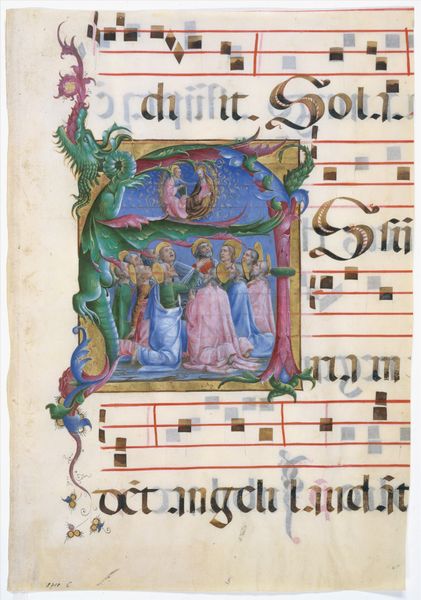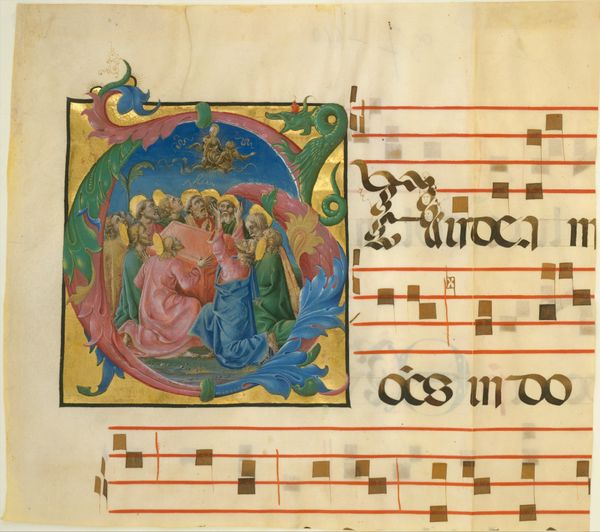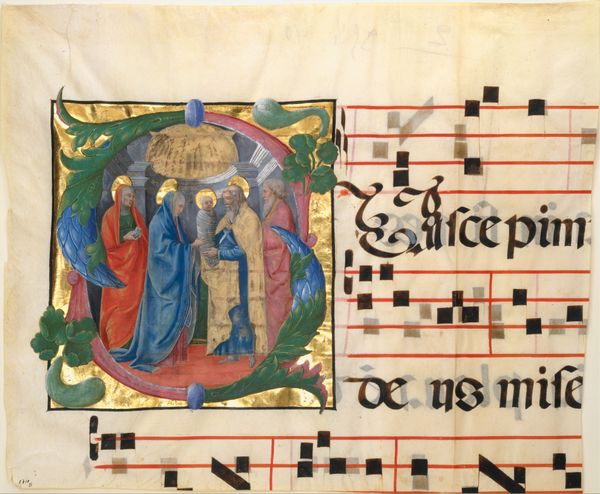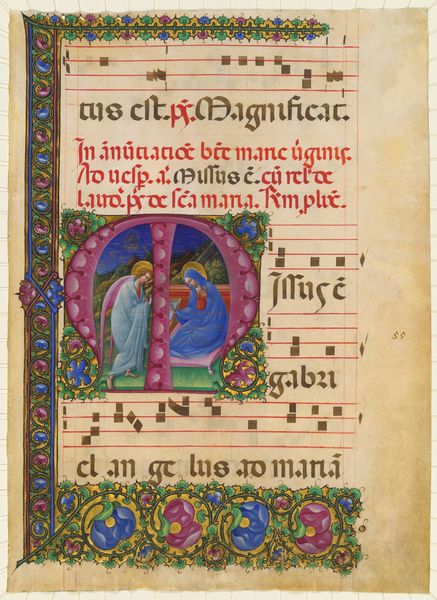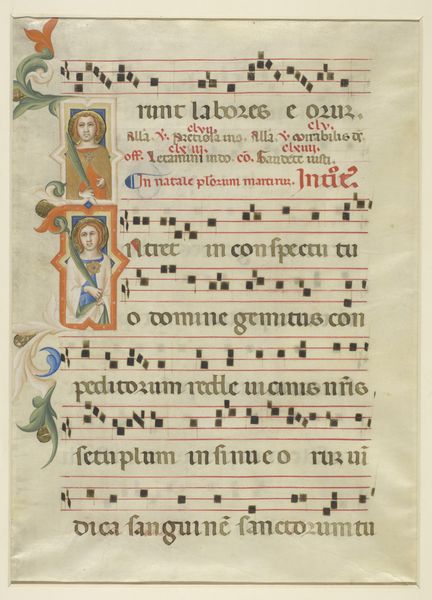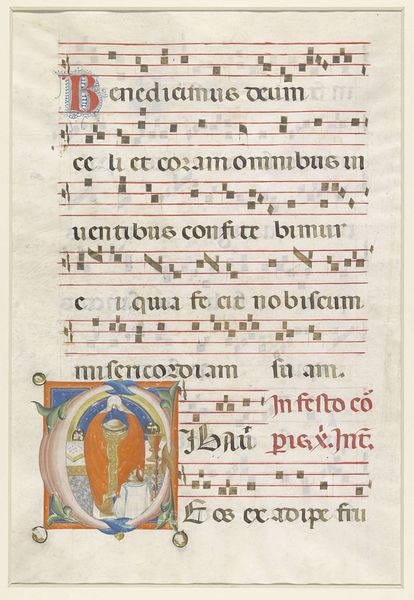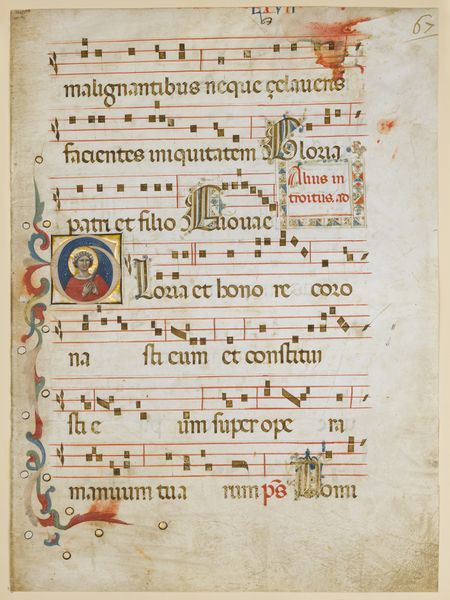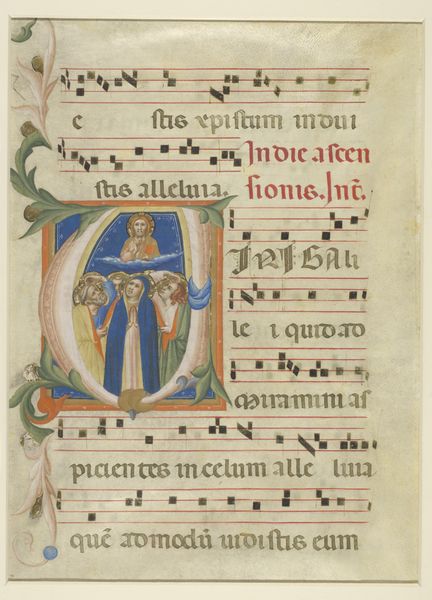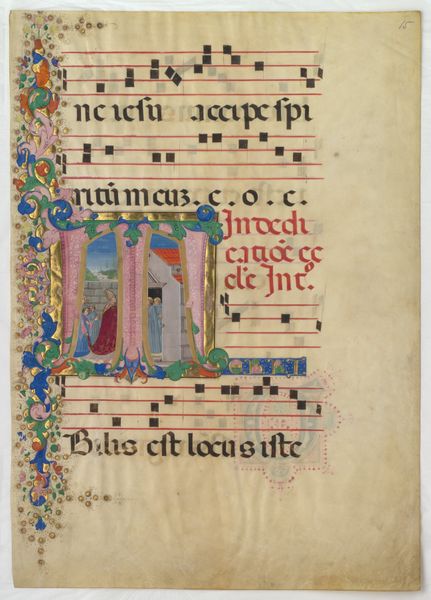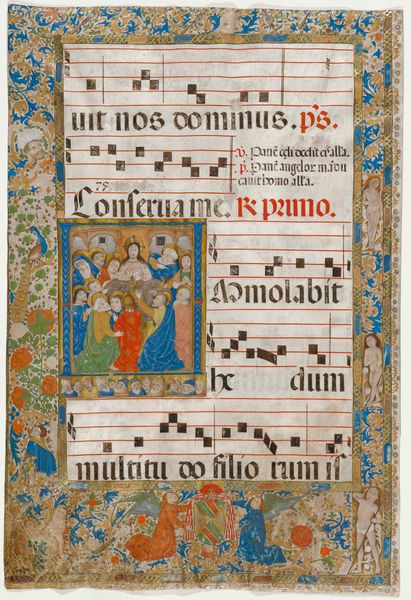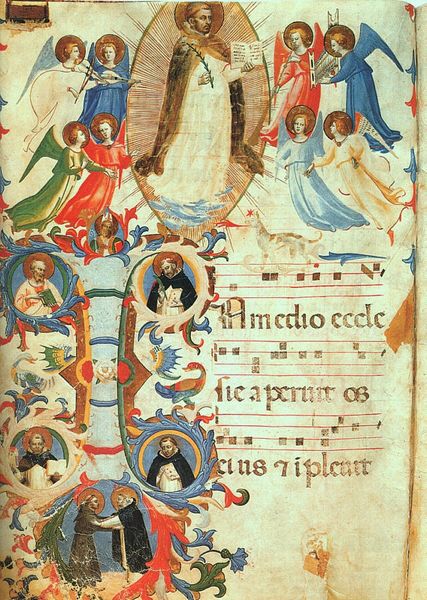
Manuscript Illumination with All Saints in an Initial V, from an Antiphonary 1450 - 1460
0:00
0:00
tempera, painting, watercolor
#
medieval
#
water colours
#
narrative-art
#
tempera
#
painting
#
figuration
#
watercolor
#
coloured pencil
#
italian-renaissance
#
italy
#
medieval-art
#
miniature
Dimensions: Overall: 14 1/2 x 12 1/8 in. (36.8 x 30.8 cm) Illumination: 7 3/8 x 6 5/16 in. (18.7 x 16 cm) Mat Size: 22 x 16 in. (55.9 x 40.6 cm)
Copyright: Public Domain
Curator: Here we have a page from an Antiphonary, specifically a Manuscript Illumination with All Saints in an Initial V, created sometime between 1450 and 1460. It is currently housed at the Metropolitan Museum of Art and is attributed to Cosmè Tura. Editor: The first thing that strikes me is the sense of solemnity, almost hushed reverence, radiating from the cluster of figures. They're enveloped in earthy tones that draw the eye to their peaceful expressions. Curator: As a piece from an Antiphonary, intended for choral recitation or singing, it reflects the role of religious institutions at the time, employing artistic expression to underscore the text. Manuscript illumination was a significant way to enhance liturgical texts visually, asserting their cultural importance. Editor: Absolutely, the imagery itself contributes so much to the reading experience. The gathering of saints within the "V" initial reminds me of communities united in faith, their collective presence emphasized by their varied garb. Did particular colors carry symbolic weight then, in terms of who might have worn such clothing and what messages would be transmitted about the identity and authority of such a figure? Curator: Colors were definitely symbolic. Blues often represented the heavens or the Virgin Mary, gold signified divinity or importance, and the earthier browns and reds worn by some figures would suggest humility, referencing the earthly lives they led before canonization. Remember, these illuminations are carefully orchestrated visual tools intended to support religious messaging, especially the ideas around communal practices of the medieval and early Renaissance Church. Editor: The saints seem to be looking upwards. Above them is what appears to be a flock of white birds, maybe? Birds and saints together are potent emblems of spirituality. And the almost muted background focuses attention on the saints; their halo-less rendering suggests perhaps that this scene signifies their shared humanity more than their celestial glory. Curator: Indeed. We see how illuminated manuscripts operated within larger networks of power – monastic orders commissioned such work, funding artists like Tura to help disseminate carefully managed religious ideas and values across their communities. The style, including the figuration of the saints, blends into the overall mission of educating and shaping people's spiritual and cultural lives. Editor: Looking at the assembly as a congregation, united in their upward gazes and similar humility in clothing, I perceive how it communicates a message that many individuals can become, in essence, unified in striving towards the Divine. This image encapsulates collective longing and unified faith, transcending the individual to reflect the shared aspirations of a community. Curator: A wonderful observation, that beautifully captures the spirit of the work within its historical moment. Editor: Agreed! Examining the human impulse to create meaning through symbols, this illuminated manuscript offers so much insight into faith and community building.
Comments
No comments
Be the first to comment and join the conversation on the ultimate creative platform.
